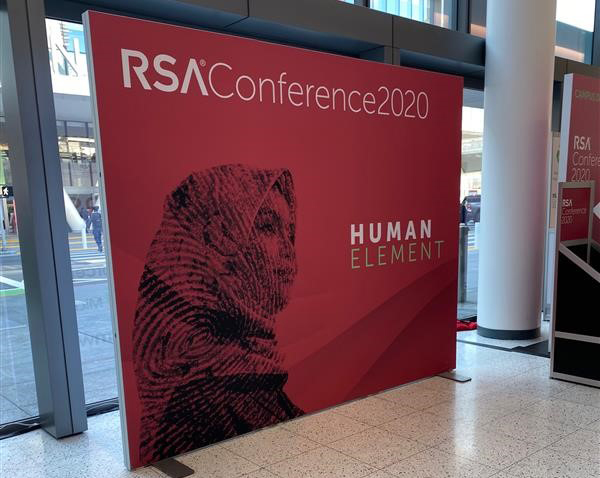Every day, it seems like there’s a new cyber threat or attack. From the fear of cyberwarfare with Iran to reports of major multinational corporations leaving sensitive customer data exposed, 2020 has already seen its share of cybersecurity crises — and Q1 isn’t even over yet. This was a major point of discussion at the annual RSA conference in San Francisco last week.
Every year, thousands of the nation’s top cybersecurity experts gather at RSA to talk about the state of the industry today. RH Strategic maintains a presence at RSA every year to keep our fingers on the pulse of the industry and meet with cybersecurity leaders and innovators from all around the world. This year, we were curious to see what vendors and experts would do with the “human element” theme.

What we saw was that, despite fears of machines taking over the world, the human element is present in every aspect of the cyber industry, from product development to the workforce shortage to ways of ensuring peak functionality in a crisis. Vendors displayed this by building interactive booths that got real people to conduct live threat hunts and play simulations of cyber-attacks.
RSA was a dynamic, engaging conference from start to finish, and we loved talking with industry leaders about the biggest issue in cybersecurity today. Here are our takeaways from this year’s conference:
We need people now more than ever
For years, people have been worrying about robots replacing humans. But at RSA we heard experts say time and again that machines won’t replace people. We need people to set guardrails and resolve issues in a crisis. We especially need people to work in cybersecurity. The workforce problem is not a new topic of discussion (our own Trish Rimo wrote about two solutions to it last year), but it was still a major issue at RSA this year, and we expect it to continue to be an issue in years to come.
Simplicity is key
In an industry known for being extremely technical, the call for simplicity seems counterintuitive at first, but this simplicity has a purpose. When a threat is detected or a crisis arises, we need solutions that can be implemented quickly, efficiently and with great confidence. That all starts with human-centric design and product development that accounts for day-to-day needs and the realities of the workforce. In order to be proactive, cyber professionals must be able to complete regular network tests fast and implement quick fixes if need be.
Cloud, Cloud, Cloud
Everyone and anyone wanted to talk about cloud and hybrid environments: what they are, how best to implement them, and what benefits they offer to businesses in a wide range of industries. When leveraged correctly, cloud and hybrid environments can make transactions faster and more secure and strengthen a company’s security posture. Moving forward, we expect to see a lot of cloud-based security solutions and products enter the market.
Zero Trust Security
This was a recurring and frequently heard phrase amongst security professionals in attendance. The presumption of infiltration by outsider attackers has shifted a good amount of focus from the organization’s perimeter to its internal systems and defenses. Authentication and encryption procedures, along with proper network segmentation were again brought to the forefront of security as means to prevent lateral movement within organizations already compromised by an external threat.
We’re looking forward to next year’s RSA! Until then, we’ll be working with some of the biggest names in cybersecurity to raise awareness of the threat landscape and introduce new solutions.
***
RH Strategic is a Seattle and D.C.-based communications firm with a nationwide presence and additional global reach via membership in the Worldcom Public Relations Group. We provide strategic public relations for innovators in the technology, government and healthcare markets.

